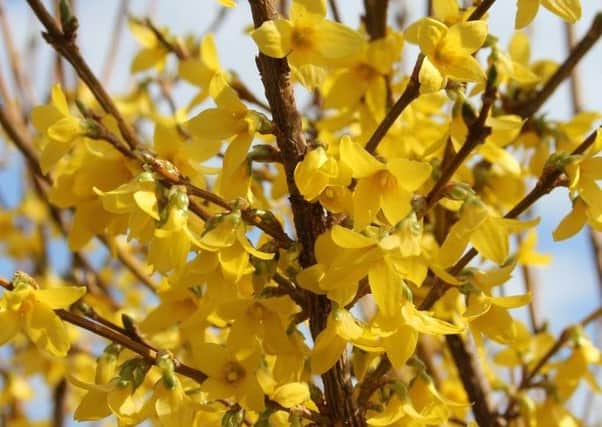Pruning of conifers should be left until the autumn arrives


Forsythia is an example of this. Some of the golden flowerbuds are just beginning to open. In a couple of weeks or so, they’ll be putting smiles on faces.
Meanwhile, we’re snipping a stem or two in bud to go alongside daffodils in a vase. They open rapidly in the relative warmth of a windowsill.
Advertisement
Hide AdAdvertisement
Hide AdThose shrubs that bloom from June onwards need pruning some time before new growth starts, say in January to March.
The best time to reduce growth on broad-leafed evergreens is May.
Two further tree groups that stand apart from the norm are ornamental cherries and conifers.
Any drastic pruning of the former is best left until late summer or autumn.
Advertisement
Hide AdAdvertisement
Hide AdLeave conifer-pruning until autumn and avoid cutting into old wood which might not regenerate.
We’ve just given the buddleja and lavatera their definitive pruning before growth begins.
Their summer-long blooms will appear on stems that have not yet developed. Both of these shrubs are capable of zooming from ground level to way above our heads in a matter of weeks.
That is why we prune in two stages, reducing their height by half when autumn approaches to avoid wind-rock, then more severely now because their main frost threat has passed.
Advertisement
Hide AdAdvertisement
Hide AdFailure to prune them in this way results in a rapid ageing of main branches which snap easily in gusty winds, whereas severe annual pruning rejuvenates.
The secateurs were active in a mixed border last week, removing protective growth left in place since summer past on various santolina (cotton lavender) plants.
They can be vulnerable to heavy frost without this.
A few hardy fuchsias, the magellanica type, in pink, purple and white, are afforded the same treatment, alongside the golden-leaved genii.
There was also a fine-tuning of the gooseberry and blackcurrant bushes before their flower and growth buds open.
Advertisement
Hide AdAdvertisement
Hide AdSeen in their present deciduous state, it is easy to identify crossing stems missed earlier and remove the weakest.
This is the last chance to create an open centre in gooseberry bushes, allowing air to flow and help prevent mildew attacking foliage and fruits later.
Alnwick Garden Club meets next Tuesday in the town hall at 7.30pm.